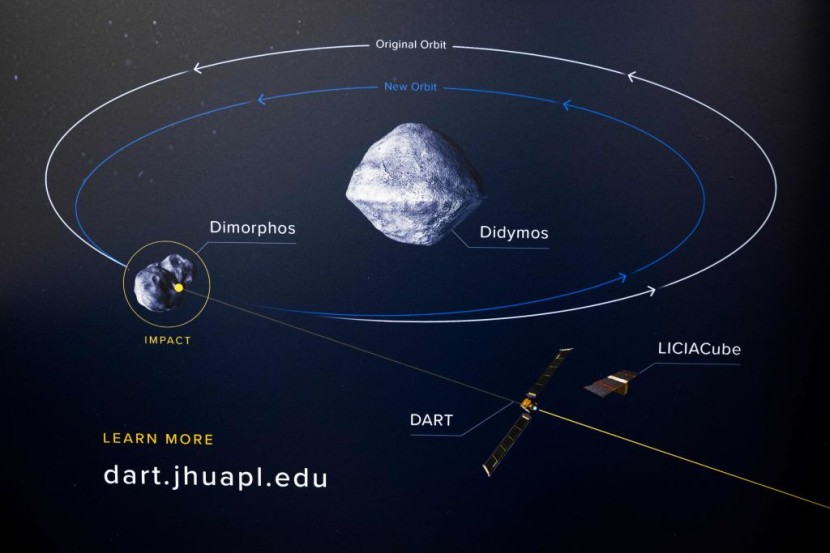
NASA announced that its unprecedented $300 million DART mission was successfully able to alter its target asteroid's trajectory after the spacecraft crashed into the massive cosmic body.
The space agency, in its Double Asteroid Redirection Test (DART), slammed a spacecraft into an asteroid on Sept. 26. The mission, a full-scale demonstration of deflection technology, became the world's first conducted on behalf of planetary defense.
NASA DART Mission Success
It was also the first that humanity intentionally tried to change the motion of a celestial object located in space. Just before the impact, it took Dimorphos 11 hours and 55 minutes to orbit its larger parent asteroid Didymos. Astronomers utilized ground-based telescopes to measure the change in the orbit of Dimorphos after the crash.
They discovered that now, Dimorphos takes 11 hours and 23 minutes to circle Didymos, which means that the DART spacecraft changed the moonlet asteroid's orbit by 32 minutes. Astronomers initially estimated that the DART mission would be successful if it was able to shorten the trajectory by 10 minutes, as per CNN.
NASA Administrator Bill Nelson said everyone had a responsibility to protect our home planet from any threat. He noted that the mission showed that the space agency is trying to be ready for whatever the universe could throw at us.
Nelson added that NASA has proven how serious it is in trying to be a defender of our planet Earth. He called the success a watershed moment for planetary defense and all of humanity which demonstrates the commitment from NASA's exceptional team and partners worldwide.
According to Aljazeera, the success of the mission comes despite the two asteroids not being a threat to our planet. Together, the pair loop around the sun every 2.1 years and was an ideal test of the "kinetic impact" method of planetary defense in the case of an actual approaching object being detected in the future.
Read Also: Milky Way Galaxy Is a Graveyard Full of Stellar Remains Similar to Cosmic Limbo Afterlife
Deflecting Asteroids
An astronomer at Harvard University, Yvette Cendes, said that there was no risk in the case of the DART mission because the asteroid pair was deliberately chosen to make sure it would not crash into Earth.
When stunning images of matter spreading out thousands of kilometers in the wake of the impact were observed, astronomers rejoiced at the successful crashing of the DART spacecraft. Both Earth and space telescopes were used to collect the pictures, including a satellite that had traveled to the zone with DART.
Cendes said that she grew up watching movies like Armageddon and Deep Impact which made seeing something similar to them, in reality, an amazing moment. Dimorphos, thanks to its temporary new tail, has turned into a man-made comet.
However, quantifying just how successful the mission was required an analysis of light patterns from ground telescopes, which took NASA a few weeks to determine. At impact, the binary asteroid system was visible simply as a single dot when observed from the ground.
The defense of the planet from hazardous space rocks is a recent addition to NASA's portfolio and DART was the first to test the method that could be used in future situations. Instead of worrying about large-scale asteroids, similar to the one that killed off the dinosaurs, astronomers are more concerned about smaller ones that are harder to discover but still capable of causing massive destruction to our planet, the New York Times reported.
Related Article : Researchers Discover White Dwarf Consuming Much Larger Star in 'Cataclysmic Variable System'
© 2025 HNGN, All rights reserved. Do not reproduce without permission.








